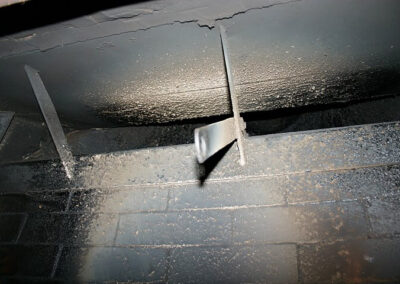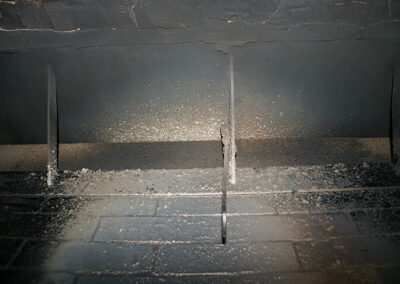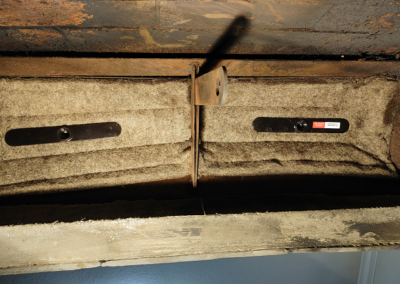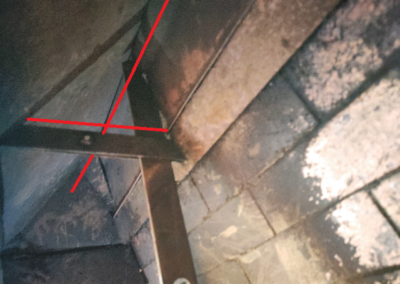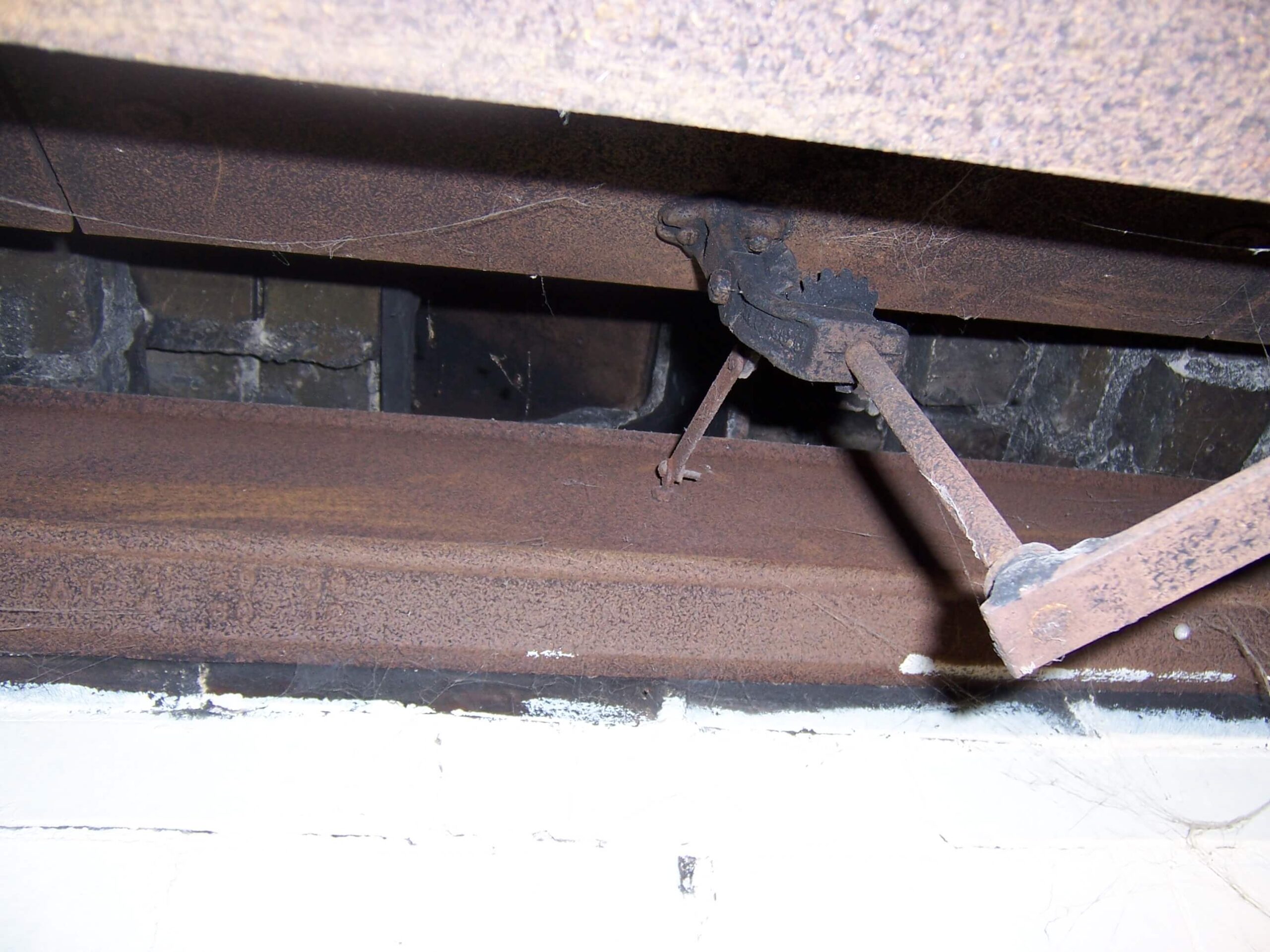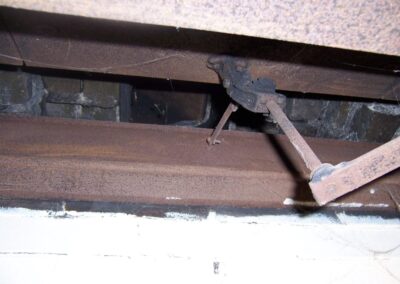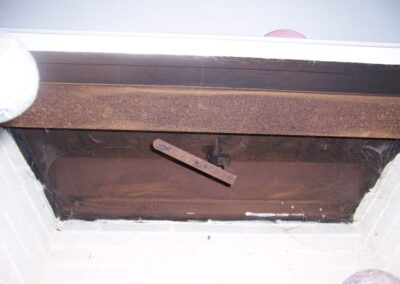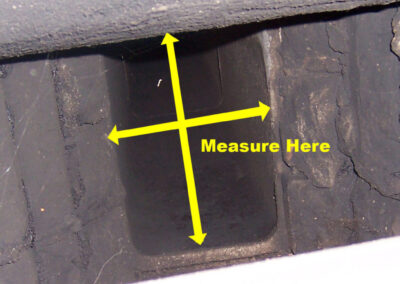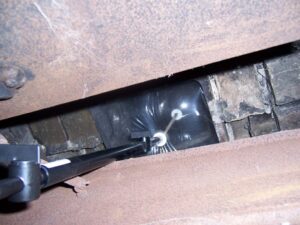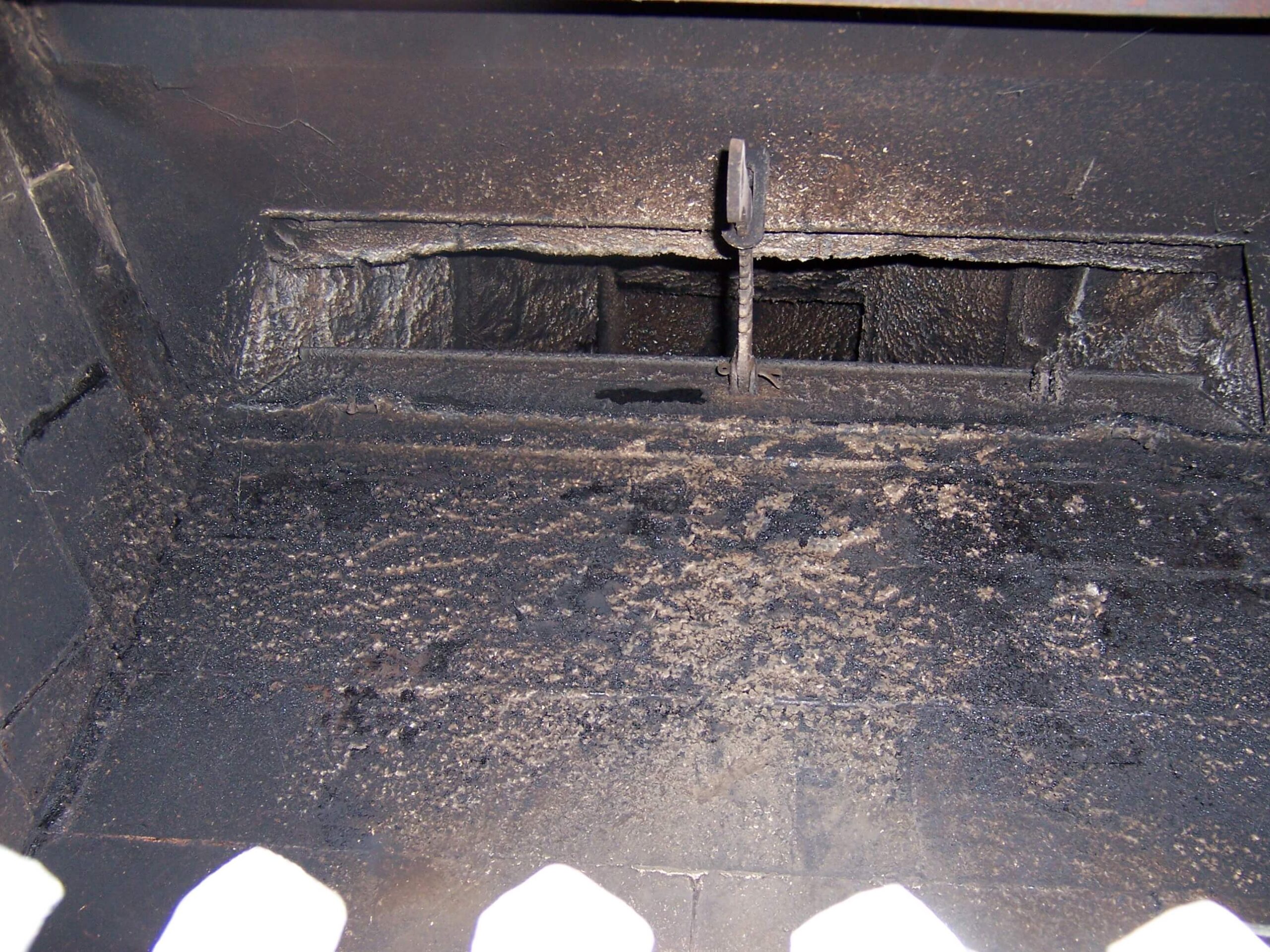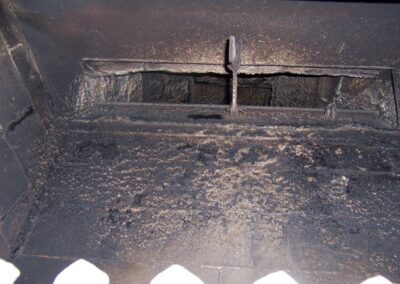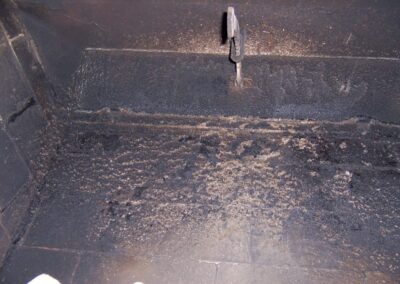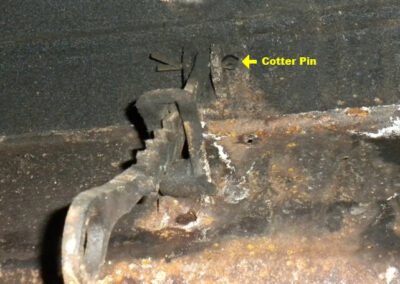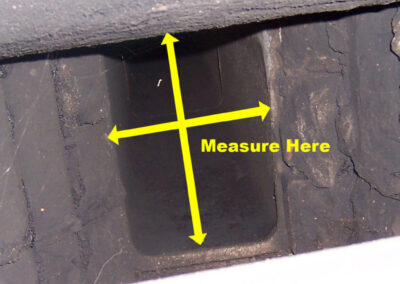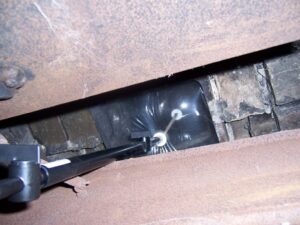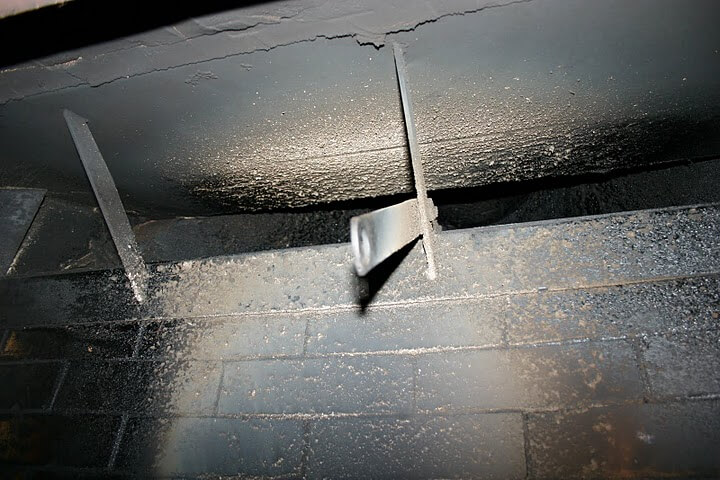
#23: I have a Swing Handle Damper with Bar Supports, How Do I Plug the Flue?
#23: I have a Swing Handle Damper with Bar Supports, How Do I Plug the Flue?
Fireplace #23: Swing Handle Damper with Supports and High Flue Tile
These Swing Handle Dampers are very common in masonry fireplaces of solid brick or stone. These are their characteristics:
- They have a long rectangular sheet iron damper frame and matching door.
- The door has a straight cast iron handle sticking down attached to a horizontal support. (image 23-2)
- The handle swings forward and back.
- All of the hardware is welded or bolted and is not removable.
- The damper door is almost straight vertical when closed.
- There are sometimes welded metal horizontal bracers below the damper (image 23-2)
This damper style is best sealed with a long rectangle Flueblocker (image 23-3). You will measure the length and depth of the area right above the horizontal bracket (image 23-4). The Flueblocker will lay right on top of those horizontal brackets. You will need to cut a small slit in the Flueblocker wool pad to accommodate the straight metal damper handle to stick through (image 23-3). Since you are threading the wool pad through a tight triangular area, it is easiest to thread the wool pad into place above the horizontal supports without the black plastic Flueblocker handles attached (image 23-3).
